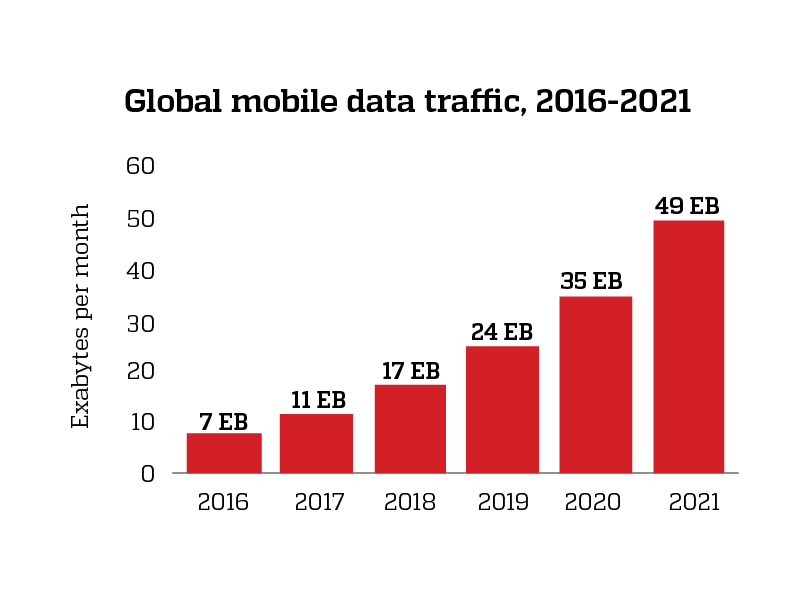

In an advanced digital age where social media and online presence are more prevalent and a part of everyday life, mobile data usage is growing quickly.
North America’s mobile data traffic grew 44 percent in 2016. Predictions show by 2021 smartphones will represent 86 percent of total mobile data traffic, and global mobile data traffic will reach 49 exabytes (one exabyte is equivalent to one billion gigabytes) per month, according to the Cisco Visual Networking Index.
Customer service representative Jordan Brown has worked at T-Mobile for three years and has seen a change in data usage over time.
Brown said T-Mobile offers only unlimited data plans. Other carriers like Verizon, Sprint and AT&T all offer unlimited data plans as well.
“In the past, our six GB data plan was really popular, which came with unlimited streaming because a lot of our customers used their smartphones to stream movies or videos,” Brown said.
The average amount of data customers in Provo use is around six GB a month, and most people use their data to access social media platforms, according to Brown.
“I think people have been using more data because phones are now capable to do more than ever before,” Brown said.
Even though many carriers offer unlimited data and forecasts show mobile data traffic on the rise, data usage varies among students in Utah.
BYU student studying physiology and developmental biology Micah Hansen said he uses about one to two GBs of data in a month.
“I’m currently on a family plan and share data with four other family members and have a 10 GB data plan,” Hansen said.
Hansen said he uses his data for streaming videos, social media and a finance application. He said he uses the same amount of data compared to two years ago because there is more Wi-Fi spots available now.
“I probably spend about 85 percent on Wi-Fi,” Hansen said. “It was more difficult back home, but now on campus you have access to Wi-Fi everywhere.”
Utah State University student Braden Steel said he uses about two and a half GBs of data and has a 10 GB shared business data plan.
Steel said he uses his mobile data frequently for work.
“I have to find places for work in Google Maps, so it is always useful in those situations. I am a driver for a plumbing supply company,” Steel said. “So, I’ve got to find addresses through Google Maps to get the plumbers their parts.”
Steel said he uses less data now than before. When he had a 40 GB shared plan, he said he did not have to worry about downloading apps, games and songs.
“Now, I try not to download anything to my phone unless I’ve got a Wi-Fi connection so I don’t use up all the shared data,” Steel said.




